![]() As a Tyrell Corporation Nexus-6 replicant, Blade Runner’s Roy Batty had a predetermined life span of just four years – and he wanted it extended. Remonstrations with his creator, Eldon Tyrell, brought only the commiseration that he had ‘burned so very, very brightly’.
As a Tyrell Corporation Nexus-6 replicant, Blade Runner’s Roy Batty had a predetermined life span of just four years – and he wanted it extended. Remonstrations with his creator, Eldon Tyrell, brought only the commiseration that he had ‘burned so very, very brightly’.
Comparable built-in end-of-life issues are increasingly impacting our music, musical instruments and music production. How brightly have we chosen to burn?
According to the TechTerms website, hardware products typically reach end-of-life (EOL) status five-to-ten years after they are produced. Frequently subject to regular revisions and ‘upgrades’, software marked as EOL will still function, but without updates or technical support from its developer – and may be incompatible with newer hardware and supporting software systems.
Wikipedia further points out that hardware manufacturers may continue to offer parts and services to demonstrate good faith and to retain a reputation for durability, although the availability of spare parts may become an issue, and the cost of manufacturing fresh spares prohibitive. Wiki also observes that software on end-of-life, end-of-sale or end-of-service sometimes passes to the user community to allow it to arrange its own service and upgrades, as happened with the Netscape web browser in 1998.
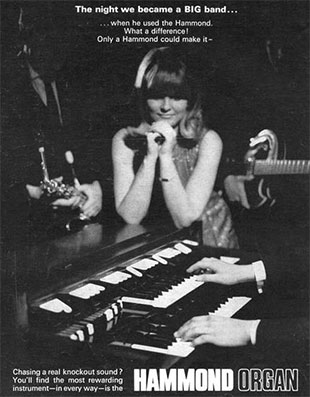 The arrival of programmable digital synthesisers towards the 1980s saw the value of their analogue predecessors, with their unstable tuning, manual patching and myriad quirks, nosedive. Having become the stuff of attics and thrift shops, the prices now commanded by those same instruments – often large, high-maintenance and some more than 50 years old – abundantly justifies their status as ‘classic’ and ‘collectable’.
The arrival of programmable digital synthesisers towards the 1980s saw the value of their analogue predecessors, with their unstable tuning, manual patching and myriad quirks, nosedive. Having become the stuff of attics and thrift shops, the prices now commanded by those same instruments – often large, high-maintenance and some more than 50 years old – abundantly justifies their status as ‘classic’ and ‘collectable’.
And the synths that displaced that first wave of analogue – Yamaha’s milestone FM DX7, Roland’s Liner Arithmetic D50, Korg’s M1 Workstation among them – have, themselves, become ‘classic’, ‘collectable’ and pricey.
So, where does this leave us with our growing dependence on softsynths, plug-in emulations of classic outboard hardware, and playlist-based music collections?
‘The reality is that this issue is much larger and much older than just the lifespan of modern software. From the moment the first musical instruments ceased being acoustic and started coming with a plug, these questions of compatibility and longevity became important,’ says Dan Goldstein – and, as CTO of plug-in company Cherry Audio as well as having been repairing, restoring, and collecting vintage synthesisers and keyboards for 25 years, he is well placed to know.
‘In 1937, when the first Hammond Model A rolled off the factory floor, no-one wondered if these instruments would still function in 85 years. The fact that they do is amazing. But there are technological compatibility issues that affect the organ. The Hammond requires electricity to alternate at 60Hz. If you take an American B3 to Europe, where A/C power alternates at 50Hz, it won’t play in tune. Likewise, organs built for 50Hz countries won’t play in tune in the US. If, at any time in the past 85 years, the details of AC current had changed, these organs would have been rendered obsolete.’
He goes on to point out that the valves used by Hammonds (as well as countless guitar amps) are obsolescent technology that is now only manufactured in China, Russia and the Czech and Slovak Republics, and that it may only be a matter of years before they are impossible to obtain. And that analogue synths, such as Prophets and Oberheims, rely on obsolete ICs that are harder and harder to find, and eventually will also be beyond repair.
‘Some instruments, including the beloved CS80, require custom ICs that companies like Yamaha created for a very short time,’ Goldstein adds. ‘Lesser Yamaha organs are often destroyed for these parts, and soon these instruments will become impossible to repair. Many digital synthesisers from the 90s are impossible to repair without replacing entire circuit boards, and those replacement parts only come from other units that have died. Eventually, there will be piles of unfixable 1990s keyboards from Ensoniq, Korg, Roland, Alesis, etc. In short, all technology brings EOL issues with it, whether it’s electromechanical, analogue, digital or software.’
Clear and present dangers
Our appetite for yesterday’s hardware has fuelled a boom in software imitations, and created a generation of players with no experience of the original instruments – for which using plug-ins is the equivalent of driving the world’s elite racing circuits on a PlayStation.
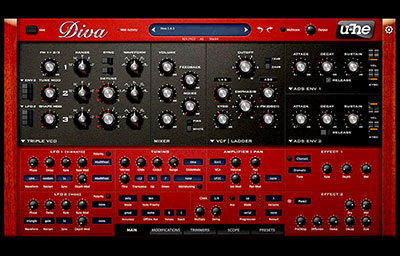 Interestingly, there is a divergence of the synth/studio world from that of guitarists here. In guitar world, classic and collectable kit has been joined by new generation technology, with old tape echoes and stompboxes revived in ‘retrospective’ hardware units rather than plug-ins – some reliant on DSP modelling, yes, but packaged in standalone units that do not share the dependency issues of plug-ins.
Interestingly, there is a divergence of the synth/studio world from that of guitarists here. In guitar world, classic and collectable kit has been joined by new generation technology, with old tape echoes and stompboxes revived in ‘retrospective’ hardware units rather than plug-ins – some reliant on DSP modelling, yes, but packaged in standalone units that do not share the dependency issues of plug-ins.
Back in the land of computer-based synths, Goldstein groups dongles, OS developments and computer hardware IO among ‘existential threats’. ‘Endless plug-ins rely on dongles like the PACE iLok,’ he says. ‘These USB devices solve a lot of theft issues for companies, but they rely upon two things – the existence of USB jacks, and the continued existence of PACE.
‘The latest Mac Mini we purchased came with one USB3 jack. How long before USB3 jacks are removed completely, making it difficult to plug in an iLok? How long until USB is dropped entirely for a newer technology? How much software will be lost because there will be no way to authorise it? I own plug-ins from the early 2000s that are unusable because they require the factory CD to be inserted into the computer for validation. In a world without CD drives, these products are effectively dead.
‘Sometimes operating system advances cause products to have shorter lives. In the past 20 years, countless 32-bit plug-ins became obsolete when OSs and DAWs became 64-bit. Thousands of printers, scanners and Midi devices got sent to the dump because their 32-bit drivers were never updated. Personally, I don’t think it’s about advances in hardware or operating systems. Instead, it’s about OS companies renewing their commitment to ensuring compatibility with older software and hardware.’
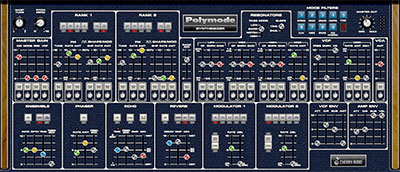 With all of this in mind, do softsynth developers pay any attention to EOL considerations? Goldstein is emphatic that they do, as does another voice joining the discussion – that of music producer and synth programmer Graeme Rawson, who works with GForce Software, the company behind the impOSCar among other soft instruments.
With all of this in mind, do softsynth developers pay any attention to EOL considerations? Goldstein is emphatic that they do, as does another voice joining the discussion – that of music producer and synth programmer Graeme Rawson, who works with GForce Software, the company behind the impOSCar among other soft instruments.
‘There isn’t a business here without OS manufacturers creating secure, fast and modern operating systems,’ he says. ‘These new tools that they develop allow us to create ever more expansive and creative – and realistic – products. However, for a very small company, frequent changes in operating systems put strain on resources and slow down new product development significantly. It’s difficult to keep up, and develop new instruments and products at the same time.
‘These are also updates that our customers expect to be free to them – not wrongly, but the cost of these developments gets eaten by the software developers. Eventually a time comes that updating old products to work on modern OSs just doesn’t make business sense.’
‘Every time there’s an operating system update that breaks something in a piece of software, companies have to make hard decisions about which products to update and which products are simply too old,’ Goldstein agrees. ‘No company ever wants to drop support for a product. But there’s significant expense required to update and rebuild drivers, installers and applications, and sometimes it just can’t make financial sense.’
And there is more bad news…
‘Sometimes it’s worse than that,’ he continues. ‘Apple, for example, won’t even allow developers to distribute applications that are compatible with macOS versions earlier than 10.9. Most people don’t know this, but it’s been the case since June 2019. Think about what that means – if you’re running an OS older than 10.9, companies are literally not allowed to make software that runs on your operating system. This forced EOL raises all sorts of ethical questions.’
‘If you buy software for a 32-bit computer and then buy a 64-bit one five-to-eight years later – or an Intel to Apple chipped Mac – do you still expect to run that software for no further cost?’ Rawson asks. ‘Apps and software is the only business that I can think of where third parties are responsible for keeping customers up to date. So, while we had already created Oddity2, impOSCar2 and M-Tron Pro before the 64-bit changeover – the driving factor being a desire to offer fresh new features that new platforms could offer – the OS change is what ultimately killed off the legacy versions.’
So what is the considered life expectancy for a softsynth or any other plug-in?
‘There’s no way to say,’ Goldstein warns. ‘Now that software is universally 64-bit, we expect 64-bit applications to last for decades. It’s more likely that OS changes, driver changes, security changes or forced-EOL issues from your OS manufacturer will cause older plug-ins to stop working. Apple, for example, has marked parts of its operating system as “deprecated”, meaning that some day these features will no longer work. Endless products rely on these deprecated features for security, copy protection or advanced features of the software. If, in the future, Apple decides these deprecated features will no longer work, thousands of applications will cease working. It’s impossible for any plug-in developer to know when these changes are coming.’
Hard choices
One way of avoiding a head-on collision with dependence on another company’s hardware is to build your own – bringing us full circle in DSP instrument manufacturing.
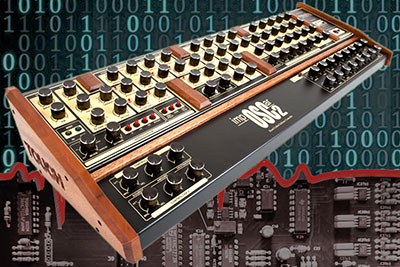 ‘It’s happened many times,’ Goldstein observes. ‘Arturia created the Origin hardware synth using their plug-in DSP. The recent Crumar Mojo organs use GSi’s organ plug-in technology…
‘It’s happened many times,’ Goldstein observes. ‘Arturia created the Origin hardware synth using their plug-in DSP. The recent Crumar Mojo organs use GSi’s organ plug-in technology…
‘But I’ve never personally seen this lead to a successful product. Software is flexible, easily upgradable and relatively inexpensive. Hardware is often none of these things. After all, the great thing about a terrific plug-in is that you can load as many instances of it as you want into a project. When a plug-in is locked into a hardware box, that becomes impossible.’
This would seem to be supported by the impOSCar2 Hardware Controller made by Touch Digital Controllers. A hardware surface intended to bring tactile performance control to GForce’s impOSCar2 softsynth, it was well received and highly regarded by all who used it, but was nevertheless a short-lived venture.
This does push us in another direction, however. I have been using the Propellerhead’s ReBirth RB338 for years – presently as an iOS app on an old iPad. The app comprises models of two Roland TB303 Basslines with a TR808 and a TR909 Rhythm Composer, and adds delay, filter, compression and bit crushing effects, as well as extensive patter/song recording and arranging.
Released in 1996 (when it was regarded as groundbreaking, and making it 25 years old) as a softsynth for PC and Mac, Propellerhead withdrew support in 2005 only for it to reappear as an iOS app in 2010. The iPhone version of the app was disabled in 2013 with the iPad app following in 2017. Now it exists only as a legacy app on devices running sufficiently old versions of iOS.
My old iPad is among those long left behind by Apple’s OS development, and it is now locked in a symbiotic partnership with ReBirth. It is its own instrument. Does this represent a future ‘collectible’ form of synthesiser, with users dedicating hardware to legacy software? If so, could Moog’s iOS Animoog and BeepStreet’s Sunrizer be among the next in line?
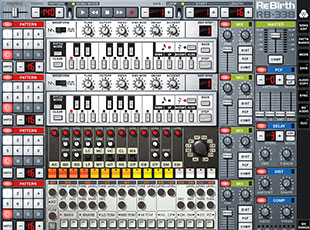 Accompanying this transitory nature of software may come a corresponding obscurity for the authors and the companies behind some fine work – particularly bearing in mind that there is a vast wealth of synth plug-ins that are not emulations (the likes of U-he’s Diva, Audio Damage’s Continua and Newfangled Audio’s Generate) and that push the boundaries of synthesis as legitimately as anything with real-world knobs, switches and sliders (and patch cords). Is there some means of ‘future proofing’ plug-ins?
Accompanying this transitory nature of software may come a corresponding obscurity for the authors and the companies behind some fine work – particularly bearing in mind that there is a vast wealth of synth plug-ins that are not emulations (the likes of U-he’s Diva, Audio Damage’s Continua and Newfangled Audio’s Generate) and that push the boundaries of synthesis as legitimately as anything with real-world knobs, switches and sliders (and patch cords). Is there some means of ‘future proofing’ plug-ins?
‘Musicians love finding ways to integrate new technology into their productions, from instruments that run on their phones and tablets, to powerful Eurorack modular synthesisers, to programmable guitar pedals,’ Goldstein reflects. ‘As developers, our challenge is to create great-sounding, affordable products that run on whatever platform a musician uses. If someone has a 2K, 4K or 8K monitor, our software should be sharp. It should be fast, flexible, and never get in the way. Every Cherry Audio synthesiser is scalable, with vector graphics, Mac and Windows compatibility. Our products are easily authorised, require no hardware dongles, and are insanely affordable. Whatever the future holds, we’ll work extremely hard to ensure that our products are compatible. It can be challenging, but our customers deserve nothing less.’
No matter how convincing plug-in emulations become, they are unlikely ever to achieve the longevity of hardware. And in this respect, they also join music streaming and digital photos – legacies that will never be handed down or rediscovered in an attic, just as inheriting a record collection or discovering family history from pictures found in a shoebox will become a thing of the past. But they are here now, offering vastly powerful musical instruments to a greater number of musicians than hardware can hope to. Best not to think too much about any investment other than your creativity.
Last/Next Blog

